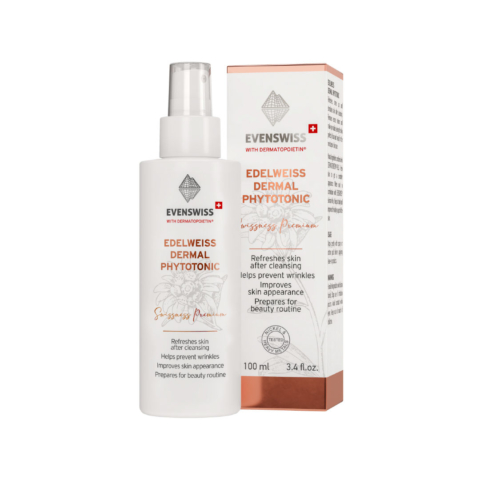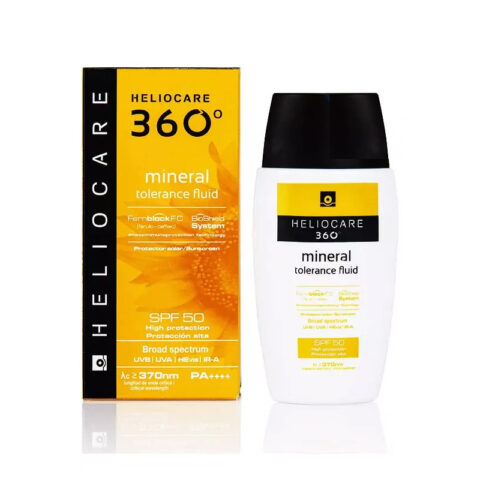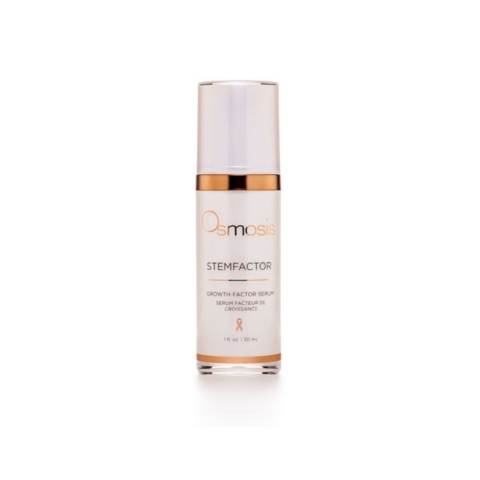What is a Chemical Peel?
Chemical peeling is a procedure for removing the surface layers of the skin using weak acid solutions to boost a rejuvenating process. Acids provide even exfoliation of several layers of dead cells, which promotes skin rejuvenation, stimulates the synthesis of collagen and elastin, and leads to the formation of young cells. As a result of such stimulation of the skin, its tone and elasticity increase.
Currently, fruit acids (glycolic) and trichloroacetic acids, as well as phenol, are used in chemical peeling. When the face surface is exposed to acids, a superficial chemical burn occurs. The depth of the burn depends on the concentration and type of acid, exposure, and individual characteristics.
Types of Chemical Peels
There are three different types of chemical peels. The first is a superficial peel and can be found in the form of AHAs. Superficial peels remove dead skin cells from the epidermis, provide mild exfoliation, and encourage the skin to regenerate and produce collagen. As a result, this type of chemical peel heals superficial scarring and wounds on the skin’s surface.
The second is a medium peel and typically contains ingredients such as glycolic acid. This skincare ingredient is beneficial for reducing pore size, blackheads, whiteheads, and pimples. Moreover, a medium peel is capable of penetrating past the epidermis to the surface of the dermis. Therefore, this provides deeper exfoliation and is suitable for more severe scarring and shedding damaged skin.
The third, and most potent, is a deep peel. This peel has the ability to penetrate into the dermis (the middle layer of the skin), and can contain ingredients such as phenol (a derivative of trichloroacetic acid). This ingredient has been scientifically proven to get rid of old, damaged and dead cells, while promoting overall regeneration at a deeper cellular level.
Chemical Peel Pros and Cons
Now, let’s list the main chemical peel benefits:
- removal of the stratum corneum, which stimulates faster cell renewal;
- activation of natural rejuvenation processes;
- narrowing and cleansing of pores;
- normalization of sebum production;
- skin treatment (rosacea, acne, and post-acne);
- scar smoothing;
- elimination of hyperpigmentation;
- improvement in complexion.
Yet, the negative drawbacks of a chemical peel treatment include:
- allergy to the components of the composition and exacerbation of dermatological diseases are possible.
- soreness (after all, it is an acid. When applied, the face can tingle and even feel like burning);
- possible complications (hyper- or hypopigmentation if the skin is too light/dark, sunburn if the conditions after peeling were not observed).
- long-term skin recovery.
After the procedure, the following chemical peel results are normally observed: excessive tightness, redness, puffiness, discomfort, tingling, burning, and temporary pigmentation.
What Does a Chemical Peel Do?
Upon contact with peeling components, the cells of the epidermis dissolve. Chemical acids stimulate enzyme growth factors and dermal fibroblasts, which promote the synthesis of collagen and glycosaminoglycans. Against the background of stress, the intercellular substance is intensively synthesized, the formation of vital molecules is accelerated, and the reparative activity of cells is enhanced. In response to intense exfoliation, the cells of the basal layer actively divide.
The accelerated renewal of the epidermis results in the formation of young cells with a high content of natural moisturizing factor, as well as new vessels that deliver nutrients, oxygen and excrete metabolites to the tissues.
As a result of a deep chemical peel, the epidermis becomes thinner, and the dermis is smoothed and thickened, becoming homogeneous. Sebaceous pores are cleansed, and the face tone is evened out. The skin is rejuvenated and looks elastic, youthful, and radiant.
How Long Does a Chemical Peel Last?
The results of a chemical peel will vary depending on which one you get. Generally, the more potent the peel, the longer the results will last. For example, the results from a light chemical peel will typically last around 1-2 months, whereas a medium peel would last 2-6 months. However, after each treatment, the results will last a little longer each time.
How Long Does It Take To Recover From a Chemical Peel?
Likewise, the recovery time following a chemical peel will vary based on the type of peel you received. For instance, a light peel will generally take 1-7 days for your skin to heal. However, a medium peel may take 7-14 days, and a deep peel might take over 2 weeks. It is also worth noting, that even when your skin has recovered, redness may subside.
Is a Peeling Treatment Bad for My Face?
As the saying goes, there is such a thing as too much of a good thing, and this is important to keep in mind when using chemical peels. Superficial and medium peels are safe when performed correctly and by a professional.
Overall, peels are generally safe, however it is likely you will experience mild peeling post-treatment. Although, the aesthetician or dermatologist should make you aware of this before.
Furthermore, you should space out the time between each peel. Depending on the treatment and the strength of the peel, it should be, on average, anywhere between 4-12 weeks. If the peels are any more frequent, then there are more possible risks and side effects. This is generally due to over-exfoliation, which could cause a reversal effect and actually damage the skin, instead of healing it over time.
Signs to look out for if you think you are suffering from over-exfoliation can include burning and peeling skin, redness, breakouts, and sensitivity to skincare products. As a result, you should reduce the number of chemical peels you are getting, or space them out to give your skin enough time to heal. This is because sensitised and damaged skin is the result of a weakened skin barrier. Furthermore, a weakened skin barrier can make your skin more susceptible to external environmental aggressors, which can unfortunately lead to even more damage.
Is a chemical peel safe?
Yes, this procedure is quite safe, but note that for some categories of people, it is not suitable. Contradictions include:
- cancer;
- poor wound healing;
- a tendency to scaring;
- pronounced rosacea;
- infectious diseases;
- dermatological diseases;
- chronic diseases in the acute stage;
- pregnancy and lactation;
- tan, very dark skin;
- recent invasive cosmetic procedures.
Note that some patients claim that their skin looks worse after a chemical peel. This case occurs due to individual intolerance to components. Besides, after a glycolic acid procedure, the skin usually becomes red. It is a common side effect; redness disappears in a day. Sometimes there is swelling of the skin, which also disappears during the day. If redness and swelling do not decrease 24 hours after the procedure, you should contact the cosmetologist who performed the peeling.
With a chemical skin peel with trichloroacetic acid, skin edema always occurs. After the procedure, a thin film is formed on the skin, which has a white color. The skin first turns pale and then turns red. Within 1-2 days, redness increases, after which the surface layers are exfoliated. Usually, all these effects last 4-6 days, while moderate redness can persist for another two weeks.
How to Care For Your Skin After a Facial Peel
If you feel that your skin has been over-exfoliated as a consequence of chemical peels then there are some simple steps you can do to aid your skin in recovery.
Step 1: Use a Gentle Cleanser and Suncreen
Stripping your skincare routine to the bare essentials is a great step. You should try to only use a gentle cleanser, moisturiser and sunscreen. Sunscreen is essential, since facial peels will make your skin more sensitive to sunlight. Dermaceutic K Ceutic SPF 50 Cream is a sunscreen specifically designed for post-treatments. Furthermore, it not only protects the skin, but active ingredients such as glycoprotein, hyaluronic acid, and silanol deeply nourish and repair to minimise irritation and redness after chemical peels, reducing down-time.
Step 2: Use a Moisturiser
An effective moisturiser to use after a chemical peel is the PCA Skin Rebalance. This product also works to recover skin post-treatment. Formulated with active ingredients such as vitamin A, borage seed oil, and evening primrose seed oil, this moisturiser strengthens the skin while reducing redness and irritation.
Step 3: Avoid Exfoliation
Finally, you should ween off any exfoliation (physical or chemical), for the time being. In this way, your skin has some time to breathe and resume regular skin regeneration. Furthermore, it can heal and begin regular function without any harsh products stripping away natural oils or layers of skin.
Keeping it simple is the key to allow your skin the time to heal. It is also worth noting that you may find yourself moisturising more than usual. This is fine, as your skin will likely be quite dry.
Are Chemical Peels Worth It?
So, are facial peels worth it? To conclude, a medical-grade chemical peel can be a great addition to your current skincare routine. If you are looking to aid your skin in speeding up the process of healing damaged skin, then chemical peels are an effective option to promote deeper cellular healing and rejuvenation.
A chemical peel can go that step further in rejuvenating and enhancing your appearance, resolving deeper skincare conditions and concerns.
However, you should always be aware of potential risks, and pay attention to how your skin responds to different skincare treatments and products.
Chemical peel aftercare
The following skincare products will help recover the skin faster and more effectively.
- Osmosis Cleanse Gentle Cleanser is a gentle-effect product that purifies the face surface effectively. It is capable of removing all sorts of pollutants, including makeup, debris, dust, and other environmental contaminants. It cleanses pores and prepares cells for further care. Natural fruit extracts treat the skin gently and soothe pores.
- Evenswiss Edelweiss Dermal Phytotonic is the perfect product for the second step of a daily skincare routine. It tones cells effectively, boosts collagen synthesis, and improves skin tone. Its natural composition comes as an excellent product for all skin types; it prepares skin for further moisturizing and nourishment.
- Stemfactor Growth Factor Serum is a highly effective product with a high concentration of active ingredients. They penetrate cells, nourishing them and boosting skin renovation processes. The product is suitable for daily application as an additional care treatment. It is applied after a toner and before a moisturizer.
- PCA Skin Rebalance is a powerful moisturizer that boosts skin rejuvenation and soothes even the most sensitive skin. The product hydrates cells and creates a reliable protective barrier on the surface. A blend of active ingredients (oils, extracts, and vitamins) nourishes cells deeply and speeds up healing.
- Heliocare Mineral Tolerance Fluid SPF50+ copes effectively with all sorts of radiation, including UV, HEV, and infrared, protecting cells from free radicals and skin damage. If you need to go in the sun, make sure to use it to avoid the negative impact. Besides, the product copes with pigmentation successfully and prevents premature skin aging.
- Endocare Gelcream is an effective daily treatment. It provides a wide spectrum of action, hydrating and nourishing cells. Its gel consistency is absorbed well, without leaving a film on the face surface, but perfectly protecting cells from environmental pollutants.





